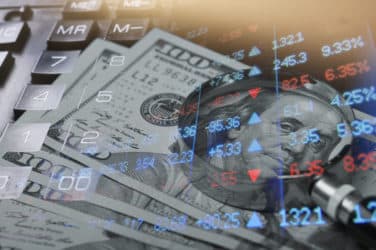Mortgage-Backed Securities and Dodd-Frank: Inconsistent and Possibly Dangerous (by Ari Mushell)
09.30.2016
Commentators and other pundits pointed to the inflated mortgage-backed security (MBS) market as the cause for the financial meltdown known as the Great Recession. In the years leading up to the Great Recession, consumers rushed to purchase houses; speculators bought property with the intention of making a quick profit; and banks were willing to finance these transactions. The U.S. economy saw a housing boom. At the time, mortgage brokers had a pipeline to unlimited cash that kept the housing market liquid. Mortgage originators, comprised primarily of commercial banks, risked little or nothing in making these loans because they could securitize the loans and sell them on Wall Street.
The consumer housing boom triggered huge investment in the MBS market. Due to securitization, investors, which included many large, multi-national investment banks, were able to profit from the highly-liquid U.S. housing market. A number of lenders approved mortgages to subprime mortgage borrowers, which is considered high-risk lending. When the housing boom slowed and it was discovered that many consumer homebuyers lacked the means to pay their mortgages, MBS investors would in turn not realize profit on their investments. The ensuing housing bust and foreclosure market ravaged MBS investors. Because many MBS investors were big Wall Street banks, those banks started to teeter, leading to the Great Recession.
Washington Responds
To prevent another financial meltdown, Congress passed the Dodd-Frank Wall Street Reform and Consumer Protection Act of 2010, or Dodd-Frank, to further regulate the U.S. financial system. The President’s stated purpose of signing the Dodd-Frank legislation, according to the White House, is to “prevent the excessive risk-taking that led to the financial crisis. The law also provides common-sense protections for American families, creating new consumer watchdog to prevent mortgage companies and pay-day lenders from exploiting consumers. These new rules will build a safer, more stable financial system—one that provides a robust foundation for lasting economic growth and job creation.”
With regard to the MBS market, Dodd-Frank mandates that lenders involved in mortgage lending have “skin in the game” or risk retention, which requires those lenders to have a stake in the MBS process. For traditional lending, vertically integrated lenders own and service the loans that they originate. In contrast, mortgage originators do not own and service the loans; instead, some agents perform servicing while others securitize the loans. As such, originating lenders have no skin in the game.
Conceptually, lenders with a stake in the process have what to lose if they make risky loans, especially questionable loans made to those with compromised credit. Similarly, Dodd-Frank limits large investors in the MBS or other asset-backed securities markets, particularly large investment banks, from using hedging techniques to offload risk associated with investment in such securities. Per Dodd-Frank, mortgage originators are required to retain 5 percent of the credit risk with any mortgage loan that underlies an MBS.
Change in government MBS policy?
An OCC handbook printed in 1997 encouraged banks to securitize risky loans and sell them on the secondary market because it was believed that this would transfer default risk out of the banking system. Regulators require banks that hold risky lending assets to accrue capital in relation to their risk. Through securitization, banks averted these regulatory requirements.
In more specific terms, the government encouraged banks to securitize and package risky loans, which include residential mortgage loans to consumers, and sell them as asset-backed and mortgage-backed securities. Investors in asset- and mortgage-backed securities can see profit on their investment only if the consumer continues making payment. By selling those securities on financial markets, investors, not the banking system, assumes that risk.
Inconsistent legislation
The current climate of reducing risk is seemingly at odds with the skin in the game risk retention requirements. Dodd-Frank mandates that certain swaps be cleared through central counterparty clearing. Prior to Dodd-Frank, swap trading generally operated in the shadows. Now, with clearing, much risk is moved from the banks to the clearing entity. Another example of risk transfer is regulatory netting requirements. Currently, regulators require that banks that trade swaps, futures, and similar broker-dealer arrangements to include a netting portion within governing agreements, wherein a bank, upon insolvency or failure to pay of the other party, can close-out and net positions to remove exposure to the insolvent counterparty. Clearly, Dodd-Frank contemplated removing risk from banks as an avenue to ensure a safe financial system.
The Volcker Rule also tinkers with this dichotomy. Under Volcker, Banks and covered financial institutions cannot engage in proprietary trading. That is, banks cannot use their own money to invest in securities, which are considered high risk. Banks, however, can engage in market-making, which is when banks use their own money to invest in securities when it is done for a customer. While there is gray area in determining whether a specific bank investment in a specific security is proprietary or market-making, the Volcker Rule ban on proprietary trading is a Congressional directive that removes risk from the banks, which is part of the greater directive to corral bank risk.
Arguably, the skin in the game MBS requirement should be viewed strictly from a consumer angle. That is, the purpose of the MBS skin in the game requirement is to prophylactically prevent risky consumer bank lending so the mortgage originator does not package the loan as an MBS. To accomplish this, Dodd-Frank requires the lender to have skin in the game, thereby changing the dynamic of a mortgage originator when deciding to make a loan. Now, the mortgage lender is much less likely to engage in high-risk lending.
Nonetheless, the banking system retains the default risk by having skin in the game, which is antithetical to the purpose of Dodd-Frank. While the skin in the game requirement strikes a balance between the consumer and commercial sides of a mortgage loan, it keeps the risk within the banking system. Even if the lenders are not financing mortgages to subprime borrowers, there is significant default risk in consumer lending.
In sum, the skin in the game risk retention policy does not blend with the purpose of Dodd-Frank, which was created to transfer risk out of the banking sector. Under the current law, the same risk that triggered the crisis must remain with those who traded MBS the most. In theory, skin in the game risk retention is a tool to reduce risky lending thereby making the market safer for both consumers and corporations. In reality, will it just lead to increased risk within our financial system?




